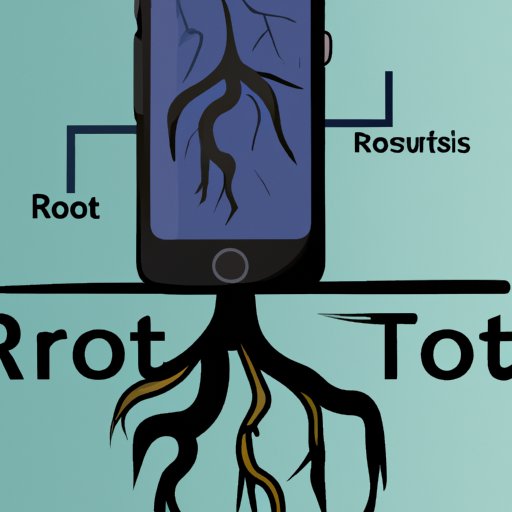Introduction
Rooting a phone is a process that gives users access to the operating system of their device. It allows you to customize, optimize and personalize your device beyond what is possible with a stock setup. While rooting comes with a range of benefits, it also carries certain risks. This article explores what is a rooted phone, the pros and cons of rooting your phone, how to root a phone, and common mistakes to avoid while rooting.

Explaining What is Rooted Phone: A Guide for Beginners
A rooted phone is a device that has been modified to allow users access to its operating system. Rooting is a process that bypasses the security features of the operating system and gives users unrestricted access to the entire system. This means that users can modify, customize, and personalize their devices beyond what is available with the stock setup.
What is Rooting?
Rooting is the process of gaining full access to the operating system of a device. By default, phones are configured with a limited set of permissions that restrict users from making any changes to the device’s operating system. However, when a device is rooted, users can bypass these restrictions and gain unrestricted access to the system. This allows them to make changes to the system, install custom software, and more.
What are the Benefits of Rooting Your Phone?
The primary benefit of rooting your phone is that it gives you full control over the device. This means that you can customize, optimize, and personalize your device in ways that are not possible with the stock setup. You can uninstall unwanted apps, install custom ROMs, overclock your processor, boost the battery life, and much more.
What are the Risks of Rooting Your Phone?
Rooting your phone comes with certain risks. Since you are bypassing the security features of the operating system, it is possible that malicious software or viruses could be installed on your device. Additionally, if you do not follow the correct steps when rooting your phone, you could end up damaging the device and voiding your warranty. For these reasons, it is important to understand the risks before you decide to root your phone.

How to Root Your Phone: An Overview of the Process
Before you begin rooting your phone, it is important to understand the process and the steps involved. Different methods of rooting a phone vary in terms of complexity and potential risks, so it is important to read up on the various methods before you start. Here is an overview of the steps involved in rooting your phone.
Steps Involved in Rooting Your Phone
The first step in rooting your phone is to download and install the necessary software. Depending on which method you choose, this could include an Android rooting app, a custom recovery image, or a custom ROM. Once you have the necessary software, you will need to enable USB debugging on your phone and connect it to your computer. After that, you can run the rooting software and follow the instructions to complete the process.
Comparing Different Methods of Rooting a Phone
There are several different methods of rooting a phone, each with its own advantages and disadvantages. Some of the most popular methods include using an Android rooting app, flashing a custom recovery image, and installing a custom ROM. Each method has its own pros and cons, so it is important to research and compare the different options before you decide which one is best for you.
Common Mistakes to Avoid When Rooting Your Phone
Rooting your phone can be a complicated process, and it is easy to make mistakes that could damage your phone or void your warranty. To stay safe while rooting your phone, it is important to avoid the following common mistakes.
Not Backing Up Data Before Rooting
One of the most common mistakes people make when rooting their phones is not backing up their data beforehand. Before you begin the rooting process, it is important to back up all of your data in case something goes wrong during the process. This includes photos, videos, music, contacts, and other important information.
Uninstalling Essential System Apps
Another mistake to avoid when rooting your phone is uninstalling essential system apps. Many people mistakenly believe that they can remove pre-installed apps when they root their phone, but this can actually cause serious problems. Before you uninstall any system apps, make sure you understand the consequences and whether it is really necessary.
Installing Unverified Software
Finally, it is important to avoid installing unverified software when you are rooting your phone. There are many programs and apps out there that claim to help you root your phone, but some of them may contain malicious code or viruses. To stay safe, always make sure to only download and install software from trusted sources.
Conclusion
Rooting a phone can be a great way to customize, optimize, and personalize your device. However, it is important to understand the risks involved, as well as the steps needed to safely root your phone. Be sure to back up all of your data, avoid uninstalling essential system apps, and only install verified software. With the right precautions, you can enjoy all the benefits of rooting your phone without any of the risks.


